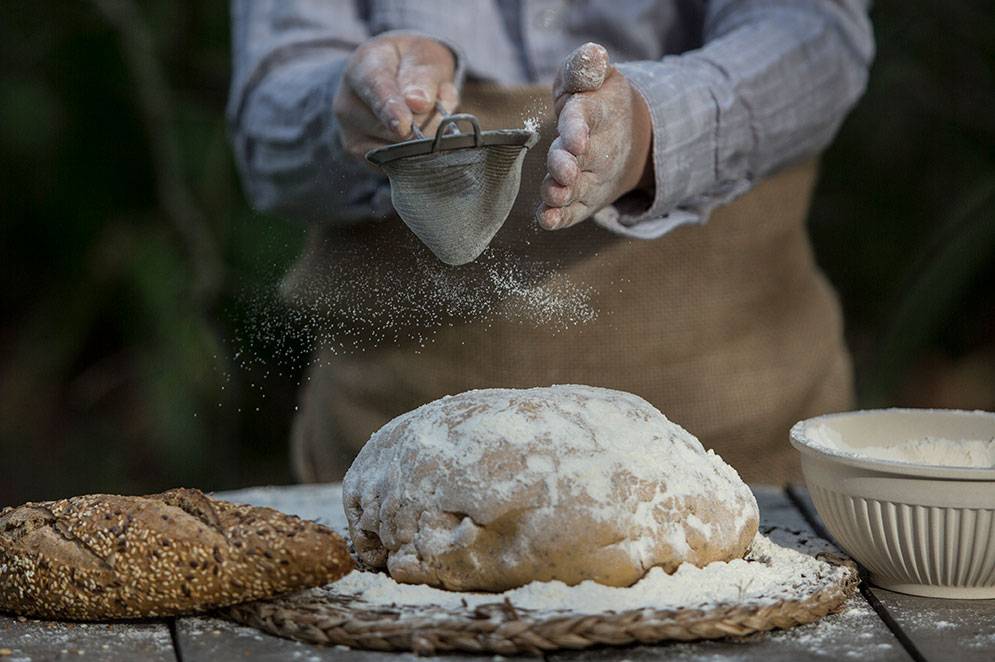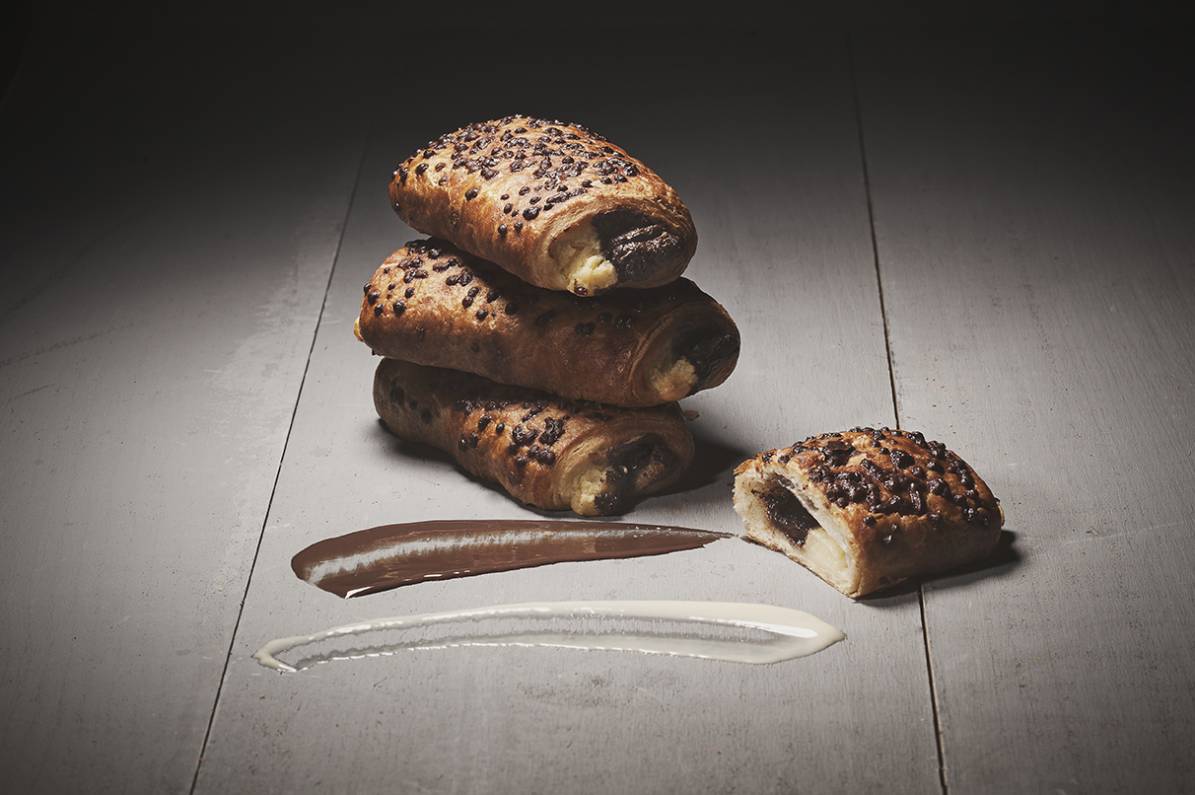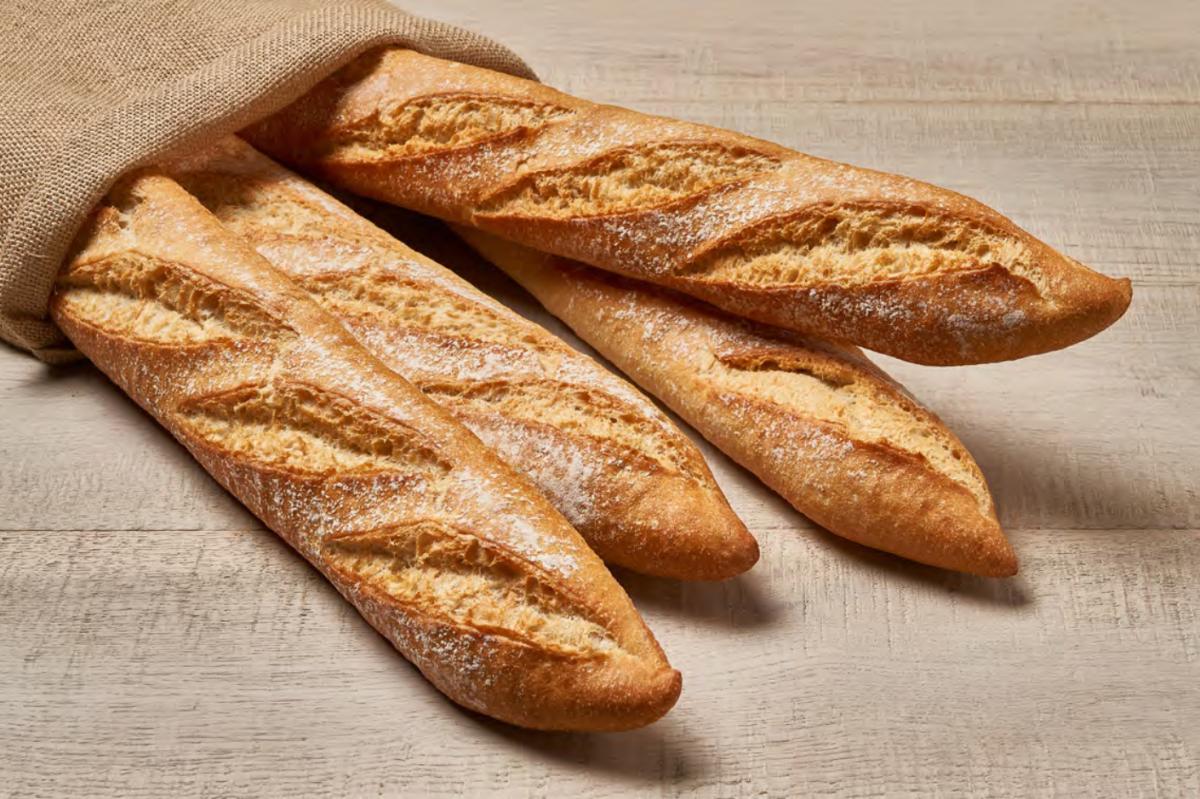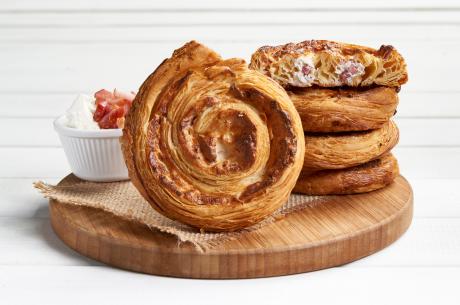Tips for making pre-baked bread

These are the steps to make the best pre-baked bread
A good pre-baked bread will ensure we enjoy ourselves at the table as long as we follow a suitable final finish process. More and more bakers and hoteliers are choosing this type of bread, since they see that the results may be as satisfactory, while the rest of the procedures are simplified and the times are controlled more precisely.
Frozen pre-baked bread is made using the two-phase baking technique. To begin with, the dough is made using the traditional process, but when it comes to the baking, it is done using specific parameters. We only seek to ensure that the breads gains structure, before leaving it to cool and moving it to the freezer.
The second baking of pre-baked frozen bread can be done whenever we wish. For it, we extract the loaf from the freezer; it will be whiter and denser than usual. After baking for about 15-20 minutes, we will have achieved a bread fresh out the oven, with the same characteristics as a traditionally-baked bread.
For all these reasons, this is a successful products in shops and restaurants, since it makes service and organisation of the times easier. Pre-baked bread maintains its virtues intact, including the flavour, and it can be served at table fresh out the oven. Now, it is important to follow a series of steps and recommendations when preparing it.

How is frozen dough bread made? From kneading to table
- Good raw material. The flour is a crucial element: it must have a firm consistency, hence it must be higher strength flour with high-quality protein and gluten since this determines its resistance (elasticity and tenacity of the dough) - although this does not mean that it is not possible to make frozen gluten-free bread . Yeasts, enzymes and, if present, enhancers and sourdough are also essential.
- Kneading and fermentation.
Fermentation is key to the bread preparation process and it is here that better controls are established over the humidity and temperature conditions. The fermentation times vary according to the variety of bread, from the shortest in white breads to the longest in rustic breads. - Be careful with pre-baking. This phase represents the fundamental difference compared to bread in traditional baking since the bread is baked in 2 stages. A first baking at this time and a second later, by the customer at the point of sale.
This first baking is done to 50% in standard pre-baked bread, which means that at the point of sale the product has to be baked for a further 10-20 minutes, depending upon the size of the item. Though it is true that express pre-baked breads are becoming more popular, since they are 90% baked in the first phase, and only need a last blast of heat in the shop that varies between 2 and 5 minutes. This option is especially practical for the hospitality industry since it makes it possible more quickly to have freshly-made bread on the diner's table, whether for baguettes or to accompany dishes. - Allow the bread to rest. Once the bread has been removed from the oven, it is allowed to cool (to 35º) on its tray so that it loses the water, and to prevent a brusque temperature change the next step is freezing. This cooling process is carried out over a limited period of time, so that the bread does not age much, and in a controlled environment without air currents to prevent the crust from cracking.
- Freezing and defrosting. Freezing is done at about -30ºC, and it is kept frozen during the entire logistical process until it reaches the customer's point of sale. Once in the store, it is essential to maintain the cold chain at -18ºC at all times.
To defrost, it can be left at room temperature for about 20 minutes. This second baking is the most delicate step, since it determines the final preparation of the bread and hence the organoleptic properties the diner will perceive. Multiple factors influence the baking: the size of the item, the shape (a stick or a loaf), the quantity of bread per batch and the temperature we use. The ideal temperature is 280º, and the oven should always be pre-heated.
Frozen gluten-free bread?
As we said, it is possible to make frozen gluten-free bread, albeit the flour is not as strong. The result is very similar to some of the breads we find on the market to bake at home and it meets the needs of the coeliac community, which does not always have an alternative at their nearest shops. There are highly practical options for baking the bread in its packaging to bake the bread completely safely, preventing all possible cross-contamination.

What about frozen pastries?
It's a very similar story. Within the wide range of frozen pastries, you can get savoury and sweet items with very high quality standards. The only difference between frozen pastries and those prepared daily is that it is first kneaded, it is pre-baked, kept frozen and it awaits a second baking before we enjoy it. This offers a series of advantages: for example, less waste, because it is baked according to demand. Moreover, since there are more and more varied products on offer, progress has been made in using good ingredients, strict production processes and adequate baking, which guarantee very appetising pastries.


